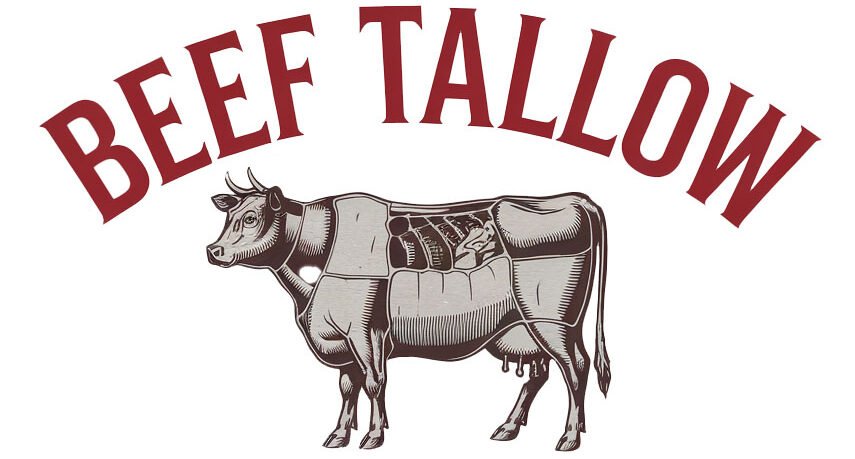If you’ve ever cooked a roast or browned ground beef, you’ve probably encountered a residue of melted fat in the pan—this is essentially the foundation of beef tallow. But what exactly is beef tallow, and why are people reintroducing it into their kitchens and routines? This article will break down the basics of tallow, how it’s rendered, and the many ways you can use it in cooking, self-care, and beyond.
Defining Beef Tallow

Beef tallow is a form of rendered fat derived from cattle. Specifically, it’s most commonly produced from suet, which is the hard, nutrient-rich fat found around the kidneys and loins of the cow. Once this fat is heated gently and the solid bits (known as cracklings) are removed, the resulting liquid cools into a solid white or off-white substance called tallow.
Key characteristics of beef tallow include:
- Consistency: Semi-solid at room temperature, solid when chilled.
- Color: Typically cream-white to pale yellow.
- Flavor: Subtly beefy, but mild if rendered and filtered properly.
- Smoke Point: Around 400–420°F (204–216°C), which is relatively high compared to many cooking oils.
A Look at Tallow’s Composition
Like other animal fats, beef tallow is primarily composed of fatty acids. It’s particularly rich in saturated and monounsaturated fats, which give it stability under high heat.
Tallow also contains smaller amounts of nutrients like Vitamin K2 (especially when sourced from grass-fed cattle) and conjugated linoleic acid (CLA), which some studies suggest may offer health benefits such as supporting metabolic health.

Why Is Tallow Growing in Popularity?
In recent years, tallow has experienced a resurgence in popularity, partly due to evolving perspectives on dietary fats. While saturated fats remain a topic of debate, many culinary enthusiasts and proponents of ancestral diets (like Paleo and Keto) see tallow as a nutritious, traditional fat that is:
- Stable at high heat: It has a relatively high smoke point, making it excellent for frying and roasting.
- Flavorful: Tallow can add a subtle, savory depth to dishes.
- Economical & Sustainable: Rendering tallow at home maximizes the use of the whole animal, reducing food waste and supporting a nose-to-tail philosophy.
Rendering Beef Tallow: The Basics

Rendering is the process of slowly heating beef fat to separate out impurities and moisture, leaving a pure, clean fat. While you can purchase ready-made tallow from stores or specialty suppliers, many DIY cooks find rendering at home to be cost-effective and straightforward.
A simplified process might look like this:
- Gather Suet or Fat Trimmings: Collect beef fat from your butcher or from trimming your own meat.
- Chop into Small Pieces: The smaller the pieces, the faster and more efficiently they render.
- Heat Slowly: In a heavy-bottomed pot or slow cooker, heat on low. As the fat liquefies, stir occasionally to prevent sticking.
- Strain: Once most of the solid pieces (“cracklings”) have released their fat, strain the liquid through a fine mesh sieve or cheesecloth.
- Cool & Store: Pour the strained liquid into heat-safe jars. Once cool, it will solidify into a creamy-white tallow.
Tip: If you notice a strong aroma or color, consider a secondary filtering stage or a “wet rendering” method (which uses water) to refine the product.

Everyday Uses for Beef Tallow
- Cooking & Baking
- Frying: Ideal for crispy fries or fried chicken due to its high smoke point.
- Roasting & Sautéing: Adds a rich depth of flavor to roasted vegetables or pan-seared steaks.
- Baking: Can be used in place of butter or shortening in biscuits, pie crusts, or pastry for a flaky texture.
- Skincare & Cosmetics
- Soap Making: Traditional soap recipes often use tallow for its firm, stable lather.
- Balms & Lotions: Tallow can be blended with oils like olive or coconut and essential oils to create deeply moisturizing salves.
- Household & Craft
- Candle Making: Tallow candles were historically common and can still be crafted at home, providing a long, clean burn.
- Leather Care: Tallow can help soften and waterproof leather items, a practice that dates back centuries.
- Biofuel & Industrial
- Commercial Use: Some industries use animal fats, including tallow, for biodiesel production and other industrial applications.
Storage and Shelf Life
Properly rendered and stored in an airtight container, beef tallow can last for months at room temperature—though many prefer keeping it refrigerated for even longer preservation. Freezing can extend its shelf life up to a year or more.
Storage Tips:
- Use clean, dry utensils to prevent introducing moisture or contaminants.
- If you detect a sour or off smell, it may have gone rancid—discard it.

Conclusion
From fueling lamps in the Middle Ages to reemerging as a staple in modern, health-conscious kitchens, beef tallow has a rich history and remarkable versatility. Whether you’re looking to embrace the “nose-to-tail” movement, explore traditional cooking fats, or craft homemade skincare products, beef tallow offers a nutritious and economical option. Learning the basics of rendering and proper usage opens the door to a wide range of culinary and creative possibilities.
If you’re new to tallow, consider sourcing high-quality fat—preferably from grass-fed cattle—rendering a small batch at home, and experimenting with it in your favorite recipes or DIY projects. You might discover that this time-tested fat brings a satisfying flavor boost and practical utility you never knew you needed.

